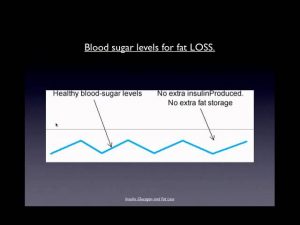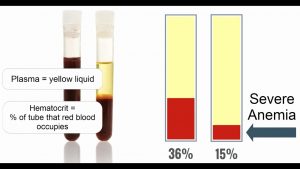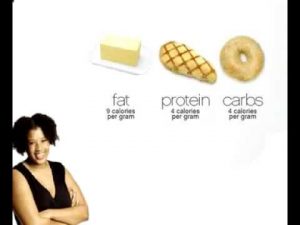medskl.com is a global, free open access medical education (FOAMEd) project covering the fundamentals of clinical medicine with animations, lectures and concise summaries. medskl.com is working with over 170 award-winning medical school professors to provide content in 200+ clinical presentations for use in the classroom and for physician CME. Primary Care – Weight Gain, Obesity Whiteboard Animation Transcript with Maja Artandi, MD https://medskl.com/module/index/weight-gain-obesity Obesity is a chronic disease that is increasing in prevalence and that is a major cause of morbidity and mortality. Obesity is defined with the help of the body mass index, or BMI calculated as Weight (kg)/Height (m²). Normal BMI is between 18.5 and 24.9 kg/m². Overweight is defined as a BMI between 25 kg/m² and 29.9 kg/m². A patient with a BMI of 30 kg/m² and above is obese. Obesity significantly increases the risk for many other diseases. The strongest correlation is seen between obesity and the development of type 2 Diabetes Mellitus. However, a patient who is obese also has a higher likelihood of developing cardiovascular disease, hypertension, osteoarthritis, infertility, liver problems and even cancer. Even though, obesity is a prevalent problem, we often don’t do a good job of counselling our patients on the importance of weight loss or the prevention of weight gain. The first step in obesity treatment is to identify the problem. It is important that a patient’s BMI is calculated at every visit. Another important way to risk stratify patients is by measuring waist circumference. The adverse consequences of obesity are most closely correlated with the accumulation of intra-abdominal fat, estimated by the waist circumference. A waist circumference in women above 88cm (35 inches) and in men above 102 cm (40 inches) is considered abnormal. Another important part in evaluating the patient is the identification of existing co-morbidities such as heart disease, diabetes mellitus, obstructive sleep apnea or severe osteoarthritis. Counselling on weight loss should always be done on an individual basis. It is important to understand and address every patient’s barriers to weight loss rather than just giving the advice to eat fewer calories. Pharmacologic interventions are indicated in Patients with a BMI of >30 kg/m² or with a BMI of 27 kg/m² with existing comorbidities who have unsuccessfully tried to lose weight with behavioural modifications. It is important to realize that these medications don’t lead to drastic weight loss and only work in conjunction with dietary modifications and exercise. It is also important to avoid medications that are known to be associated with weight gain. Patients with a BMI above 40 kg/m² or a BMI above 35 kg/m² with existing comorbidities qualify for bariatric surgery, which is effective in moderate and severe obesity but can also have significant complications.

Overweight & Obesity Video – 29
- Post author:
- Post published:May 14, 2021
- Post comments:0 Comments
You Might Also Like

Branches of Physiotherapy Video – 5

Hematology Video – 1

Which Vitamin B12 Supplement Should We Take? Dr Michael Greger

Leg Press-2

Cardio-Thoracic Physiotherapy Video – 4

Food Antioxidants, Stroke, and Heart Disease

General Surgery Video – 1

ALTERNATING KNEE CRUNCH WITH ARMS

Insulin, glucagon and fat loss

Hammer Curl-1

Body mass index Meaning

Special Weight Loss Routine Video – 5

What Happens To Your Body When You Stop Exercising | The Human Body

Yoga Diet Video – 5

Military Press – Dumbbells

Formula 1 Nutritional Shake Mix (How Can I Get Weight, gain weight, get fat, get weight, gain fat)

Complete 20 Min ABS Workout – Gym Body Motivation

Ketogenic Diet 101 – The FASTEST Weight Loss Diet | Details, Benefits & Results | BeerBiceps Health

Health And Fitness Video – 4

Hypertrophic Cardiomyopathy (HCM) in Cats

How to do a donkey kick/ fire hydrant variation (cycling core exercises demo)

SIDE PLANK CRUNCHES

Alternate HEEL TOUCHES For Women | How To

BMI Protocol Video

hormone replacement therapy – How to Increase Estrogen Healthy Life Styles

Geriatric Physiotherapy Video – 14

6 components of Skill related fitness

Goodmorning-3

Medication Safety for Kids

BEST EXERCISE for V-SHAPED BACK! (Hindi / Punjabi)

Weightlifting Video – 2

How To: Smith Machine- Upright-Row

Equipment Demo – The Reverse Hyper

Blood pressure Meaning

Recognizing and Treating Jaundice

Zumba Dance Workout for weight loss

Review: Skinny Sprinkles Day 5 l Clare Elise

What is JAUNDICE? What does JAUNDICE mean? JAUNDICE meaning, definition & explanation

The Health Benefits of Vitamin B7 (Biotin)

Anemia: what is it? what does it look? who gets it? how do we treat it?

Dumbbell Lateral Raise exercise

